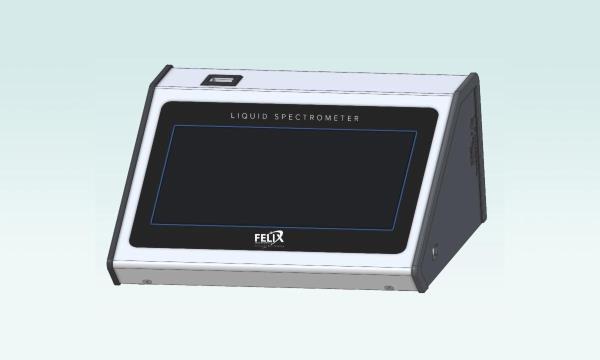Using NIR for cherries and plums, new liquid Spectrometer soon to be developed
Orchard-side optimization of fruit quality is experiencing renewed research focus in the fresh fruit industry as new technologies and quality metrics have emerged to enhance consumer acceptance and satisfaction.
Based on NIR spectroscopy, the F-750 Produce Quality Meter, manufactured by Felix Instruments – Applied Food Science is a general device for fresh produce and recommended by scientists for many fruits. It can non-destructively measure quality metrics such as dry matter, Total Soluble Solids (TSS or brix), titrable acidity, and color. Accurate, individual readings are genereted rapidly, within 4-6 seconds. A built-in GPS makes mapping fruit trees easy.
A general instrument F-750 has a wide range of applications and can be modeled for specific fruits easily. It portable and can be used by anyone anywhere in the supply chain, from determining optimal harvest timing by assessing fruit maturity, to providing an objective analysis of produce quality of fruit in packing houses and upon import. NIR is user-friendly and does not require special training to operate.
The instrument can be used for a wide range of fresh produce such as persimmons, cherries, plums, peaches, etc.
NIR for Cherries
Cherry is not climacteric and does not ripen after harvest but it can age, which causes them to get softer and decay. The fruit ripens on the tree and changes color, texture and taste. Therefore, sugar content and color development can be used as indicators of ripening to predict the harvest time that can improve yield quality.
Recent research findings have confirmed that NIR spectroscopy can be used in cherry varieties to identify and quantify: firmness, soluble sugar content (SSC), dry matter (DM), acidity and color intensity or chroma.
Cherries harvested at the wrong time will not be of proper quality. Besides, spoilage can increase when fruits are harvested late. Sorting and detecting bruised fruits can also reduce waste. Simple NIR handheld tools, which can be used throughout the supply chain can increase farm yields and maintain fruit quality until they reach consumers.
NIR for Plums
A single NIR based on spectroscopy can replace several different methods and equipment to measure various quality and maturity parameters in plums, such as sugars, firmness, acidity, color and other compounds.
NIR can estimate maturity indices and fix harvest time. However, in plums that are going to be marketed as fresh fruits, the F-750 is more popularly used to monitor important quality parameters: soluble solids content (SSC), titrable acidity, pH, malic acid, tartaric acid, and anthocyanin.
In addition, NIR has been used to measure taste in plums and can accurately sort fruits into respective varieties, even if they have the same SSC and titrable acidity. The non-destructive fruit tasting method can be used to grade plums in warehouses and retailing for authentication and pricing. As a result, plum production is optimized and becomes more profitable for all stakeholders by frequent control during all stages of the supply chain.
Focusing on pre and post harvest applications, Felix Instruments helps fresh market professionals maximize the value of their products with the line of portable Gas Analyzers and NIR Produce Quality Meters.
Now the company announce the current development of a brand new instrument, the Felix Liquid Spectrometer. This new tool will measure Brix, moisture content and titratable acidity in liquids - fruit juices, vinegars and more. The product development is in the early stages but it is possible to sign up here to be the first to receive features, specs and live demo details as they become available.
More about the company on their website.





